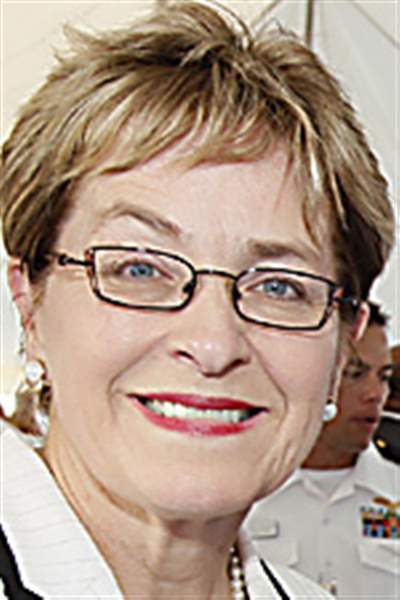
EDITORIAL
A grandmother’s warning, a clarion call to save Lake Erie
8/19/2014
Kaptur
THE BLADE/DAVE ZAPOTOSKY
Buy This Image

Kaptur
The Lake Erie ecosystem is literally the most sustainable place on the planet. Nowhere else on Earth does this much fresh water meet this much arable land.
That’s why I have fought to protect the Great Lakes from such threats as degraded water quality, invasive species, and schemes to divert our water to arid regions.
Lake Erie is our region’s chief strategic asset. It is our lifeblood. This month’s water emergency in Toledo is a dagger pointed at the heart of our entire region. If we lose Lake Erie, we lose everything.
Still, for more than two days, a half-million people could not draw drinking water, even though they live near the largest river that flows into Lake Erie. If that is not a call to action, what is?
When I was a child, my immigrant grandmother, Teofila, taught me an important lesson. We were strolling along the Maumee River downtown when she stooped low and let the polluted water run through her fingers. “Someday, America will pay a great price for this,” she said to me.
I was too young to grasp fully her words of warning at the time. But I have remembered them as our nation spent billions of dollars to clean up the messes of past negligence and heedlessness, passed the Clean Water Act, and resolved to save the bounty of creation for future generations.
America has made great progress too. When I was first elected to Congress in 1982, only two pairs of nesting bald eagles lived on Lake Erie. Their numbers had been decimated because of the pesticide DDT.
Today, there are dozens of nesting pairs. The bald eagle, our nation’s symbol, has been taken off the endangered species list. The law worked. We saved Lake Erie.
Then, during the 1980s, the Reagan Administration began cutting environmental programs, including the federal share of funding for local water and sewer projects. As local costs increased, opposition grew to necessary improvements — an almost self-fulfilling prophecy of abandon and neglect.
Just upstream in our tristate watershed, the largest inland lake in Ohio, Grand Lake St. Marys, is gradually choking to death on toxic algae, mainly from unaddressed farm runoff. Fortunately, Grand Lake lies entirely within the congressional districts represented by House Speaker John Boehner and U.S. Rep. Jim Jordan, two of the most powerful Republicans in Congress.
Now they know firsthand the cost of inaction. Grand Lake is a microcosm of Lake Erie; we simply cannot allow what happened there to happen here.
Conservatives in Congress continue to attack environmental laws. One such vote took place in the House just a few days before Toledo’s water crisis changed our lives forever.
The time for politics is over. It’s time for action at the local, state, and federal levels. The mission: Save Lake Erie.
We need a responsible structure to manage water and land resources. A good starting point would be expansion of the Western Lake Erie Basin Partnership that I launched 15 years ago. It is a road map to cooperation and action that is unmatched in the public realm.
In the short term, our water utilities must implement rigorous and timely testing protocols, unlike the chaos of the three-day ordeal of gathering and testing samples during Toledo’s emergency. Testing equipment must be closer to the lake, perhaps at the University of Toledo’s Lake Erie Center or Ohio State University’s Stone Lab complex on Gibraltar Island.
The federal government can play a helpful role by collecting data through the National Oceanic and Atmospheric Administration and even NASA. The U.S. Department of Agriculture can help farmers employ better management practices.
But all of us have to do more — much more. The latest crisis to Lake Erie’s survival does not lend itself to a quick fix. This problem did not arise overnight and will not be solved overnight. The solution will be complex and costly.
Still, my Grandmother Teofila was right: America is paying greatly for mistreating nature. Toledo’s image has paid a severe price for a preventable water crisis.
And unless we — all of us — move with much greater resolve and dispatch, the price will truly be unsustainable, not just for Toledo and northwest Ohio, but also for our entire region.
U.S. Rep. Marcy Kaptur (D., Toledo) represents Ohio’s 9th Congressional District.